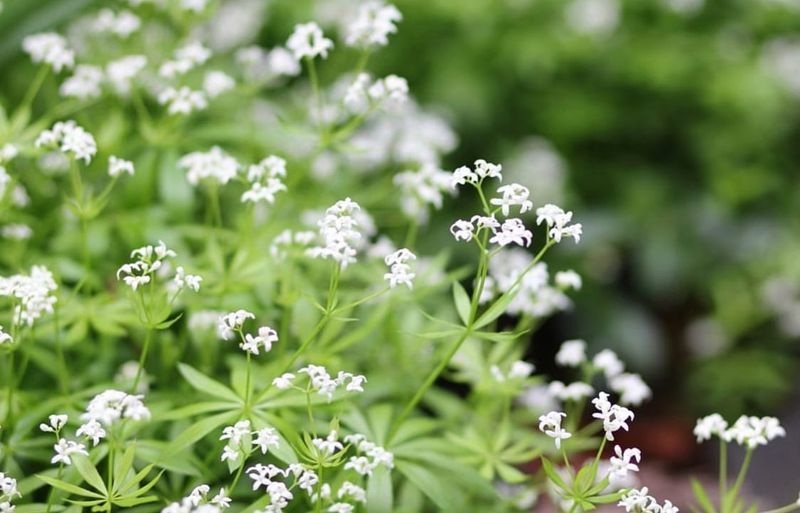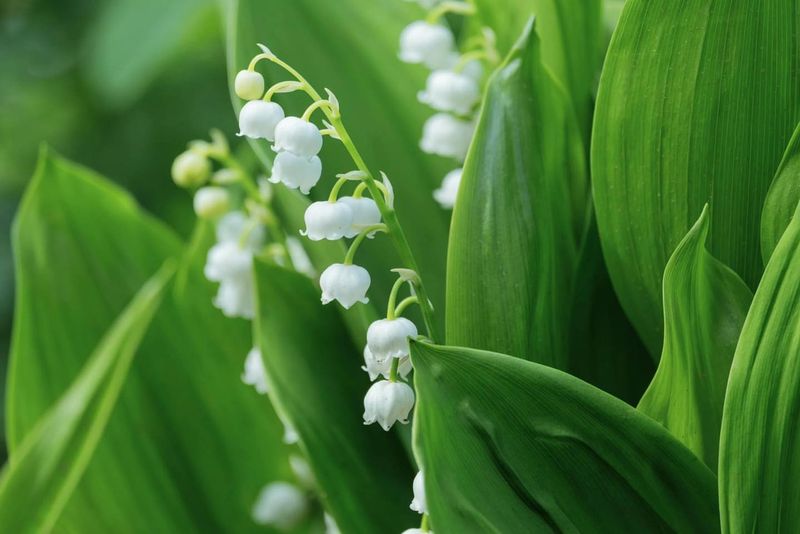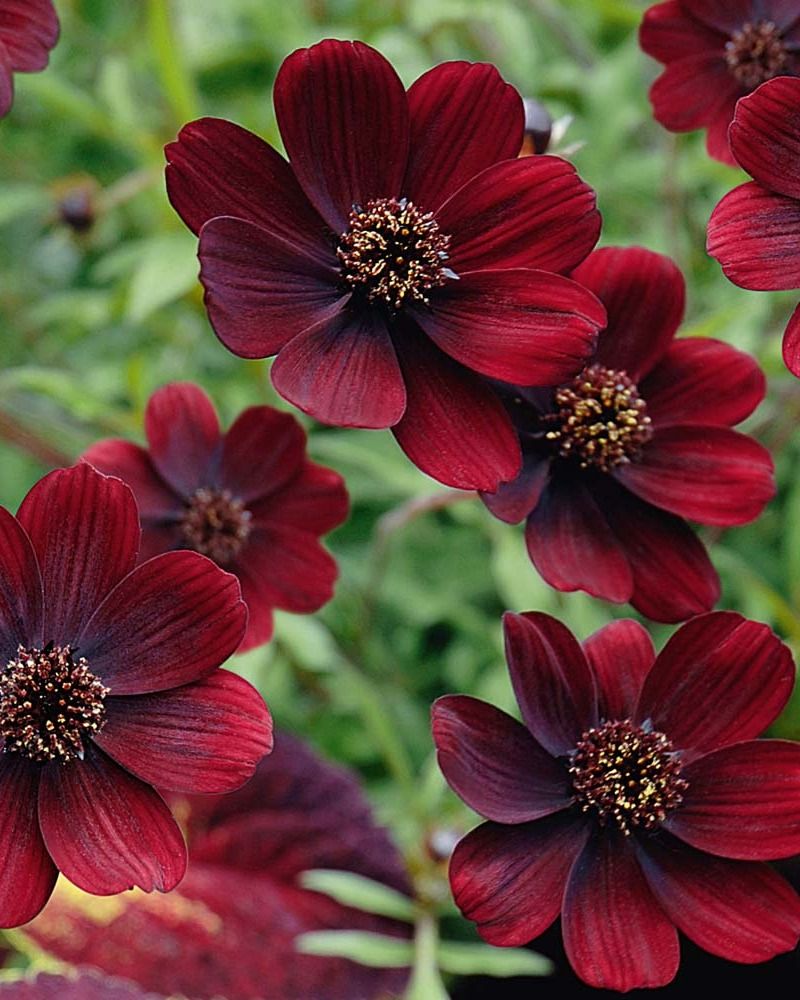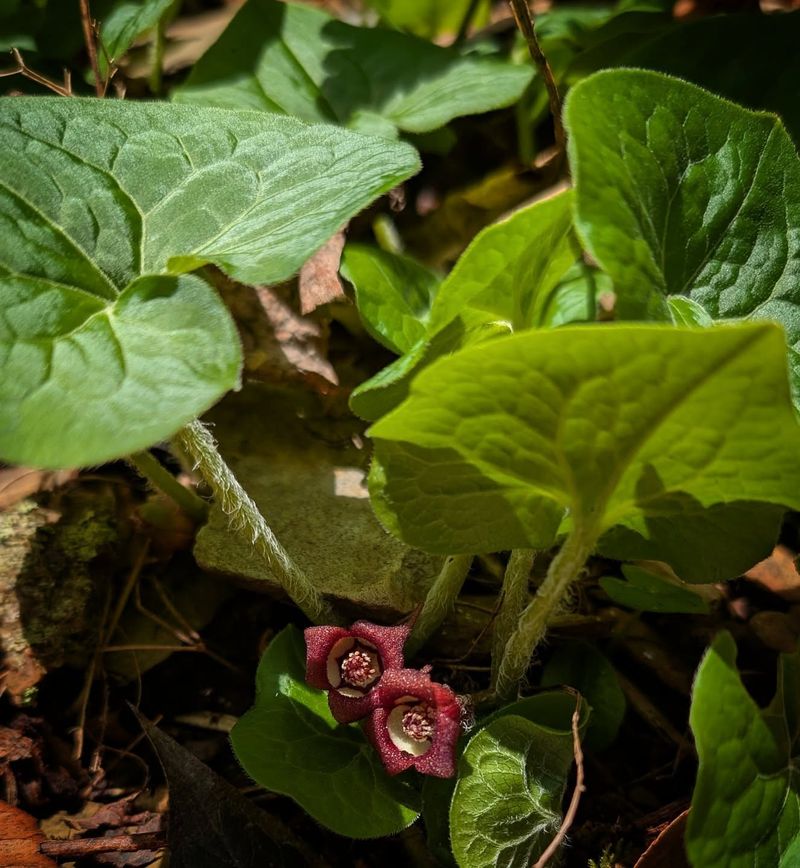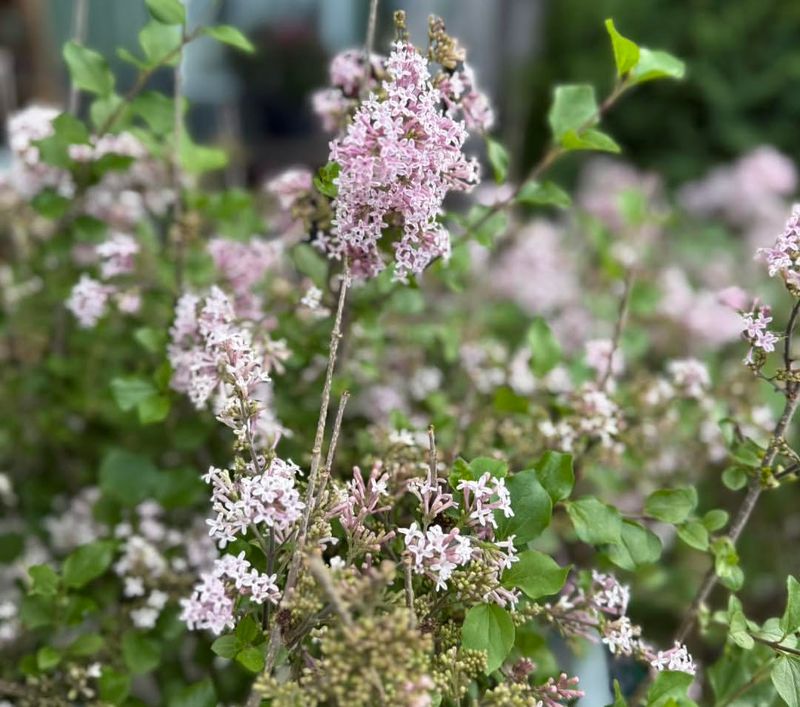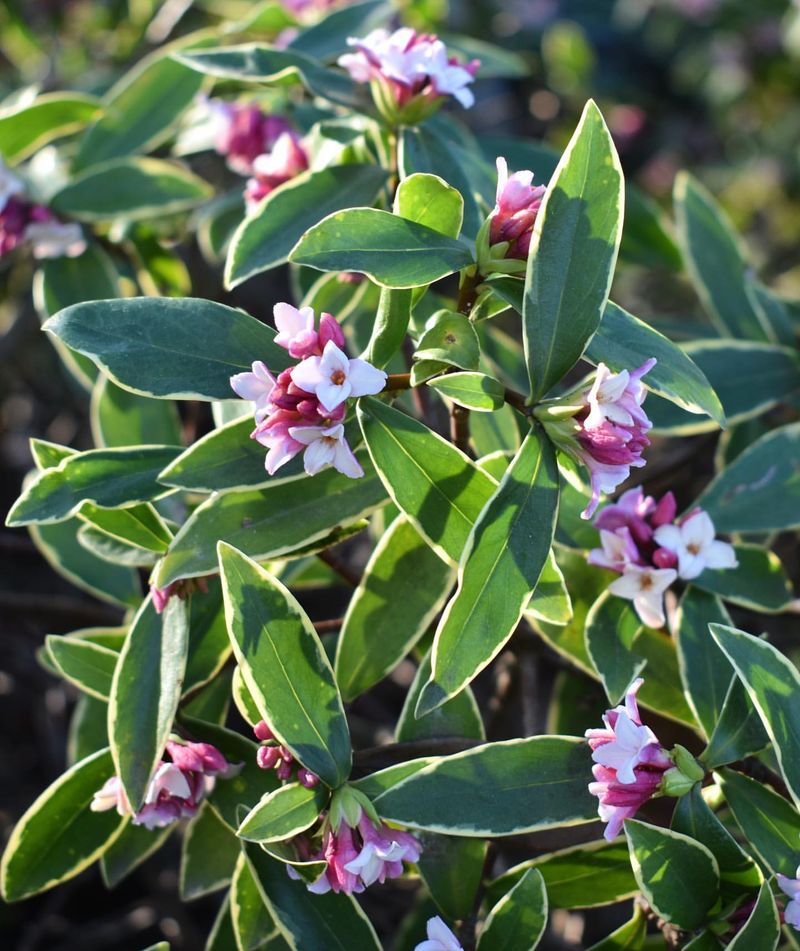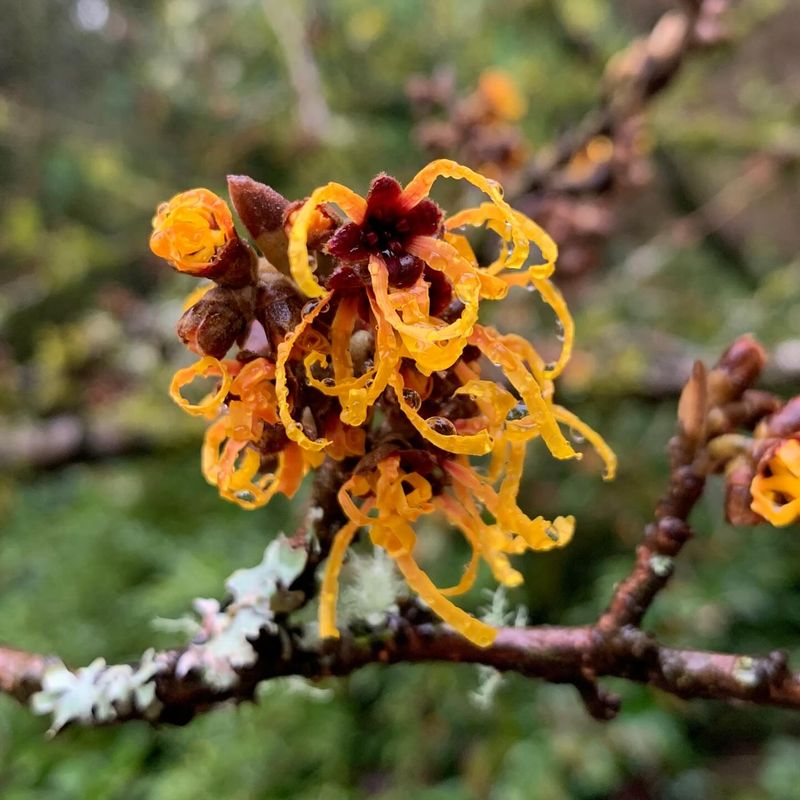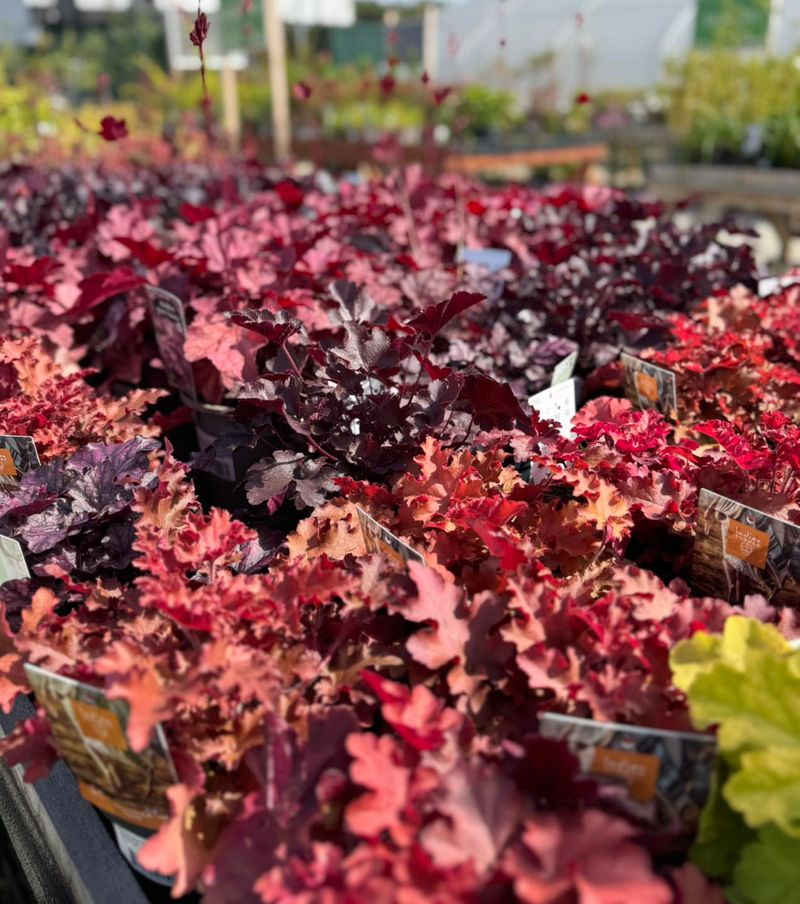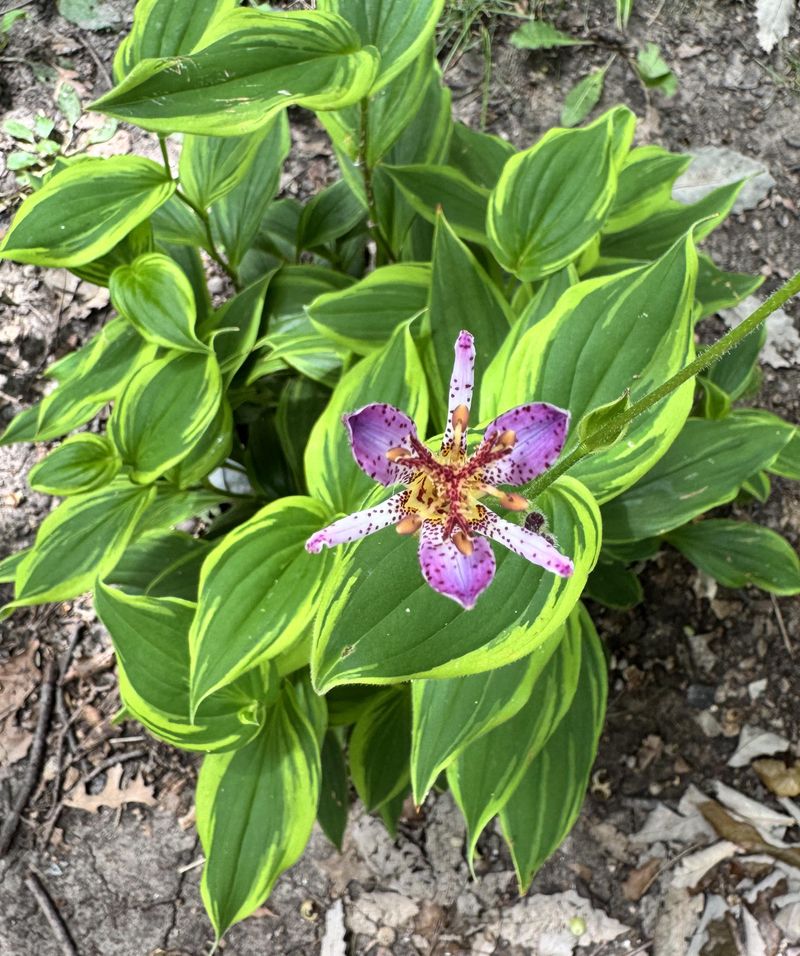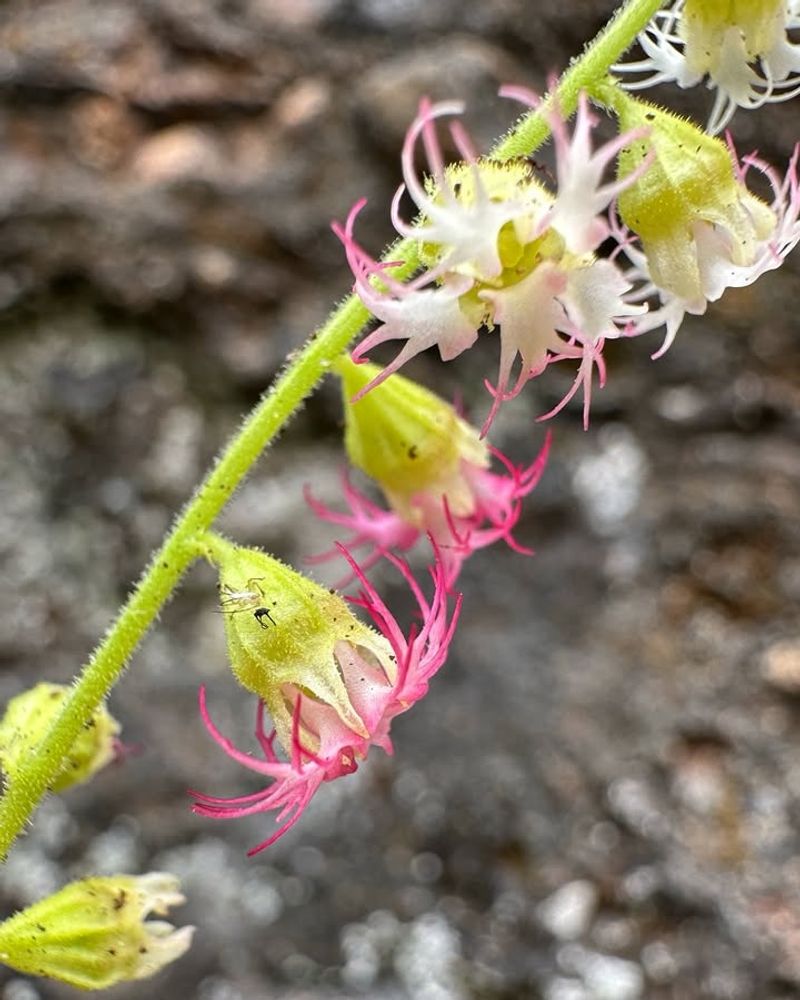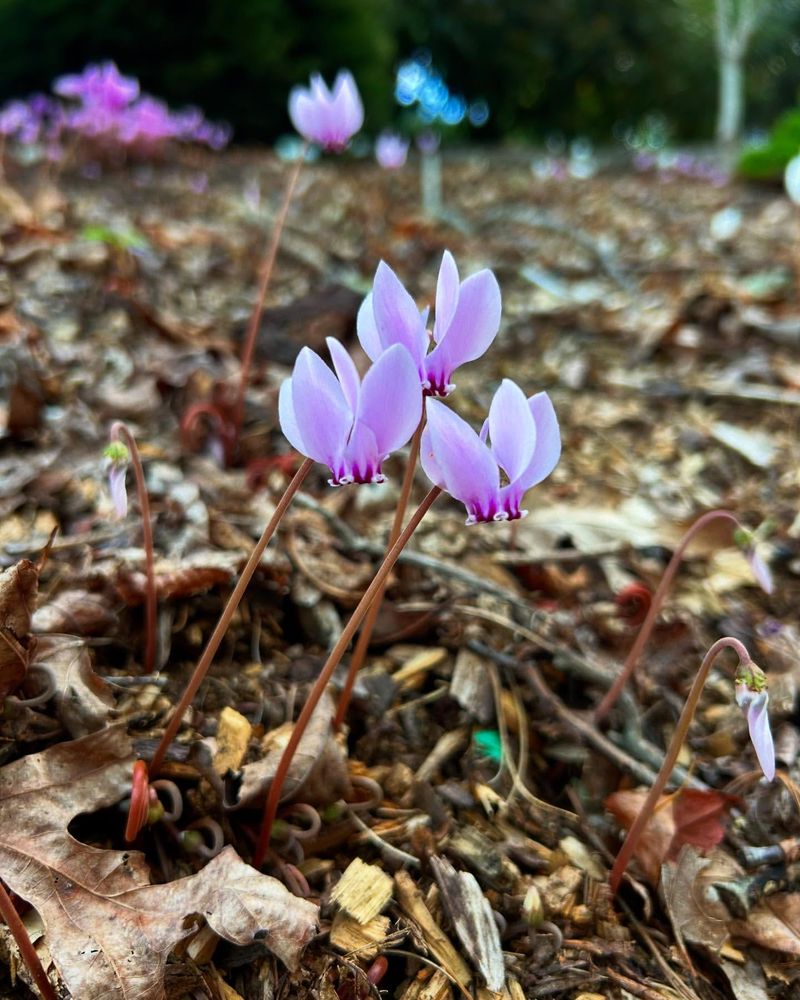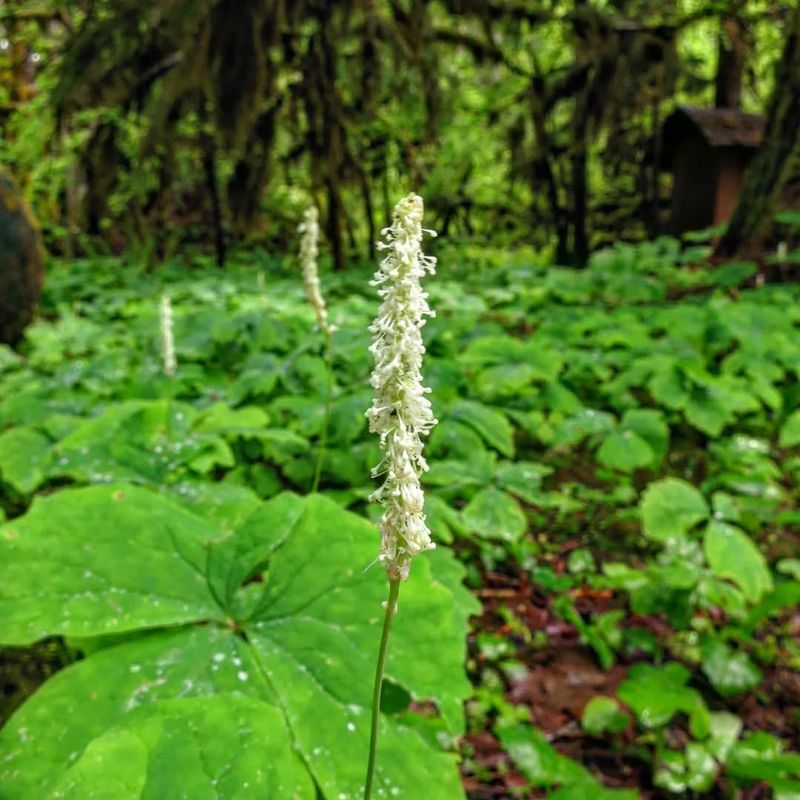Oregon shade gardens hold secret treasures that reveal their sweet scents only when you get up close. Many gardeners miss out on these hidden fragrant gems because they’re hunting for more showy blooms.
Tucked away beneath trees and in darker corners, these plants offer surprising and delightful scents that reward the curious gardener who takes time to explore.
1. Sweet Woodruff
The delicate white flowers of Sweet Woodruff release a vanilla-hay fragrance when crushed or walked upon. Their star-shaped blooms appear in spring against bright green whorled leaves. Once dried, the fragrance intensifies, smelling like fresh hay with hints of vanilla.
In medieval times, Sweet Woodruff was used to stuff mattresses and sweeten rooms. In Oregon gardens, plant it as a ground cover in deep shade where you’ll brush against it while walking through your garden.
2. Lily Of The Valley
Nodding bell-shaped blooms dangle like tiny white lanterns above broad green leaves. Their perfume is intoxicating but only detectable when you kneel down for a closer sniff. Victorian gardeners prized these woodland treasures for their sweet, clean scent reminiscent of spring rain.
The fragrance has been captured in high-end perfumes for centuries. Grow them in a shady corner where you can pause during garden strolls to enjoy their delicate aroma.
3. Chocolate Cosmos
Dark burgundy flowers with velvety petals hold a surprising secret – they smell exactly like chocolate! The scent is most pronounced on warm evenings when you lean in for a sniff. Originally from Mexico, this unusual cosmos variety has adapted well to Oregon’s climate when given protection from harsh winter conditions.
Pollinators rarely notice its scent, but humans find it irresistible. Plant near garden paths where visitors can discover the unexpected chocolate aroma.
4. Wild Ginger
Hidden beneath heart-shaped leaves, Wild Ginger produces curious brownish-purple flowers that rest on the forest floor. Most gardeners miss them completely! Crush a leaf between your fingers to release the spicy, ginger-like aroma that gives this native plant its name. Indigenous peoples used it medicinally and as a wild spice.
Tuck Wild Ginger into the darkest corners of your garden where conventional plants struggle but its aromatic leaves will thrive.
5. Dwarf Korean Lilac
Unlike its showier cousins, this compact lilac thrives in Oregon’s dappled shade, where its subtle fragrance becomes a delightful surprise. The lavender-pink blooms appear in late spring on a bush that stays manageably small.
Bending close reveals the classic lilac scent, but in a softer, more delicate version. Perfect for smaller Oregon gardens where traditional lilacs would overwhelm the space. Position near windows or seating areas where the gentle fragrance can drift indoors on spring breezes.
6. Winter Daphne
Winter Daphne produces clusters of pink-edged white flowers when most of the garden sleeps. The waxy blooms release an intense citrus-spice fragrance that seems impossible for such small flowers! Slow-growing and somewhat finicky, this evergreen shrub rewards patient gardeners with its heavenly scent during February’s gloom.
Just a single sprig brought indoors can perfume an entire room. Plant where you’ll pass by regularly during winter months when its surprising fragrance will lift your spirits.
7. Witch Hazel
Spidery yellow blooms unfurl on bare branches in late winter, offering a spicy-sweet scent that carries surprisingly little distance. You’ll need to press your nose close to fully appreciate the complex fragrance. Native witch hazels evolved their subtle scent to attract early-season pollinators in the forest understory.
In Oregon gardens, the fragrance intensifies on sunny winter days when few other plants offer any scent at all. Grow as a small understory tree where winter sunlight can reach its branches while summer shade protects its roots.
8. Coral Bells ‘Chocolate Ruffles’
The chocolate-burgundy foliage steals the show, but lean in close to the tiny bell-shaped flowers on tall stems and you’ll discover a subtle sweet scent. Hummingbirds find it irresistible! This tough perennial thrives in Oregon’s damp shade where other plants might rot.
The leaves release a pleasant earthy aroma when brushed against or after summer rain. Mass plantings create dramatic foliage contrast while providing dozens of delicately scented flower stalks from late spring through summer.
9. Toad Lily
Exotic-looking spotted orchid-like flowers appear in fall when most shade gardens have finished blooming. Their subtle vanilla fragrance reveals itself only when you kneel down for a closer look. Japanese woodland gardens have treasured toad lilies for centuries for their unusual beauty and sweet scent.
The speckled blooms seem to glow in the deepening autumn shadows. Group several varieties together to extend the blooming season from September through the first light frosts of November.
10. Fringe-Cups
Native to Oregon’s forests, these charming plants produce tiny greenish-white flowers with delicate fringed edges. Bend down to discover their subtle honey-like scent that attracts native bees. Fringe-cups grow naturally along shady streambanks where their scent helps pollinators locate them in deep forest shade.
The fuzzy, maple-like leaves form attractive mounds even when not in bloom. Use as a native ground cover in moist woodland gardens where their gentle fragrance becomes a sweet surprise.
11. Hardy Cyclamen
Upswept butterfly-like flowers in shades of pink appear in fall or late winter, depending on the species. Their honey-sweet fragrance is faint but rewarding when you kneel for a closer smell. Ancient Greeks believed cyclamen had magical properties due to their seemingly impossible winter blooming and subtle perfume.
The marbled silver-patterned leaves add visual interest even when not in flower. Plant under deciduous trees where summer shade protects them while winter sun encourages more abundant flowering.
12. Vanilla Leaf
Three-lobed leaves rise from the forest floor in early spring, releasing absolutely no scent while growing. The magic happens when leaves are dried – they develop an intense vanilla fragrance that lasts for years!
Indigenous peoples of the Pacific Northwest hung bundles of dried vanilla leaf in homes as natural air fresheners. The inconspicuous white flower spikes have minimal scent compared to the dried foliage. Grow this native treasure in deep shade where its bright green leaves brighten woodland gardens.


